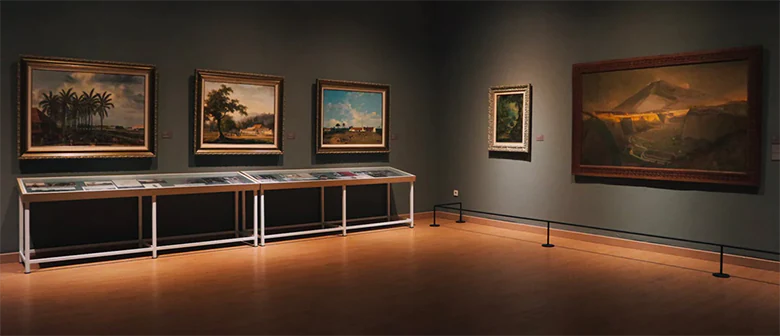Caroline Faigan, Lilith
85 Victoria St, Wellington
Ticket Information
Restrictions
Website
Listed by
Lilith
Solo exhibition by Auckland-based artist Caroline Faigan
The earliest written account of Lilith, the First Woman, is found in The Alphabet of Ben Sira, an anonymous Babylonian text written between 650-1050 CE. A commentary on Hebrew mythology, the text includes a parallel book of Genesis, the Biblical story of creation. In Genesis I, Lilith was created by God from the same earth as Adam as his equal, his wife. Adam did not consider Lilith his equal.
Lilith was discontented, and defied her creator by demanding independence, leaving Adam in favour of living alone at the Red Sea. In the more commonly-known creation mythology of Genesis II, Eve was created as a wife for Adam from one of his own ribs.
She was lured by a serpent to eat the forbidden fruit from the tree of knowledge of good and evil, resulting in their banishment from the Garden of Eden. As Lilith’s story evolved in parallel with Eve’s, she became prevalent in superstition as a harmful demoness and a shapeshifter, conflated as the snake that led to Eve’s moral demise.
Largely absent as a figure in present-day Jewish practice, Lilith has endured in art and literature as an archetypal seductress. She is the subject of many historical paintings and mentioned in the writing of Goethe and the literature of Primo Levi. In recent years Lilith’s negative reputation has wavered. As the First Woman who showed independence and courage by leaving Adam to live alone, she is now championed as a feminist icon.
Lilith has become a duality, both feared and revered. It is for this reason that Lilith fascinates; she confounds the traditional biblical binary roles of women as good-evil, mother-lover, demon-heroine. This is especially relevant to consider today as these binary codes begin to shift and dissolve in contemporary culture.
Faigan was first introduced to Lilith at the Paris Museum of Jewish Art and History in 2015 viewing the exhibition, Angels and Demons in the Jewish Tradition. The exhibition presented an abundance of amulets, evil eye protectors, good luck charms, and the demoness Lilith. Appearing as a naked figure with unkempt hair, sometimes bound in chains, sometimes as a serpent, Lilith was decidedly macabre and starkly interesting. Faigan was enchanted.
In this exhibition, Faigan reimagines a contemporary interior and exterior space for Lilith. A bedroom is a place of nocturnal habitation that is historically the site of birth, death, sex, dreams, privacy, and transformation. The circle, square and triangle, architectural details of Babylonian temples, sit within and alongside the mirror, the body, the stripe and the fruit. All these elements work together to explore the construction of identity, the serpentine line, dualities, fertility and desire.
Having completed her BFA from Elam in 1999, Faigan began a career in film art and costume departments. After working on several award-winning films, Faigan relocated to the UK and worked in fashion education. She returned to Elam in 2015 for her MFA, completing it in 2018. Faigan lives and works in Auckland.
Log in / Sign up
Continuing confirms your acceptance of our terms of service.




Post a comment